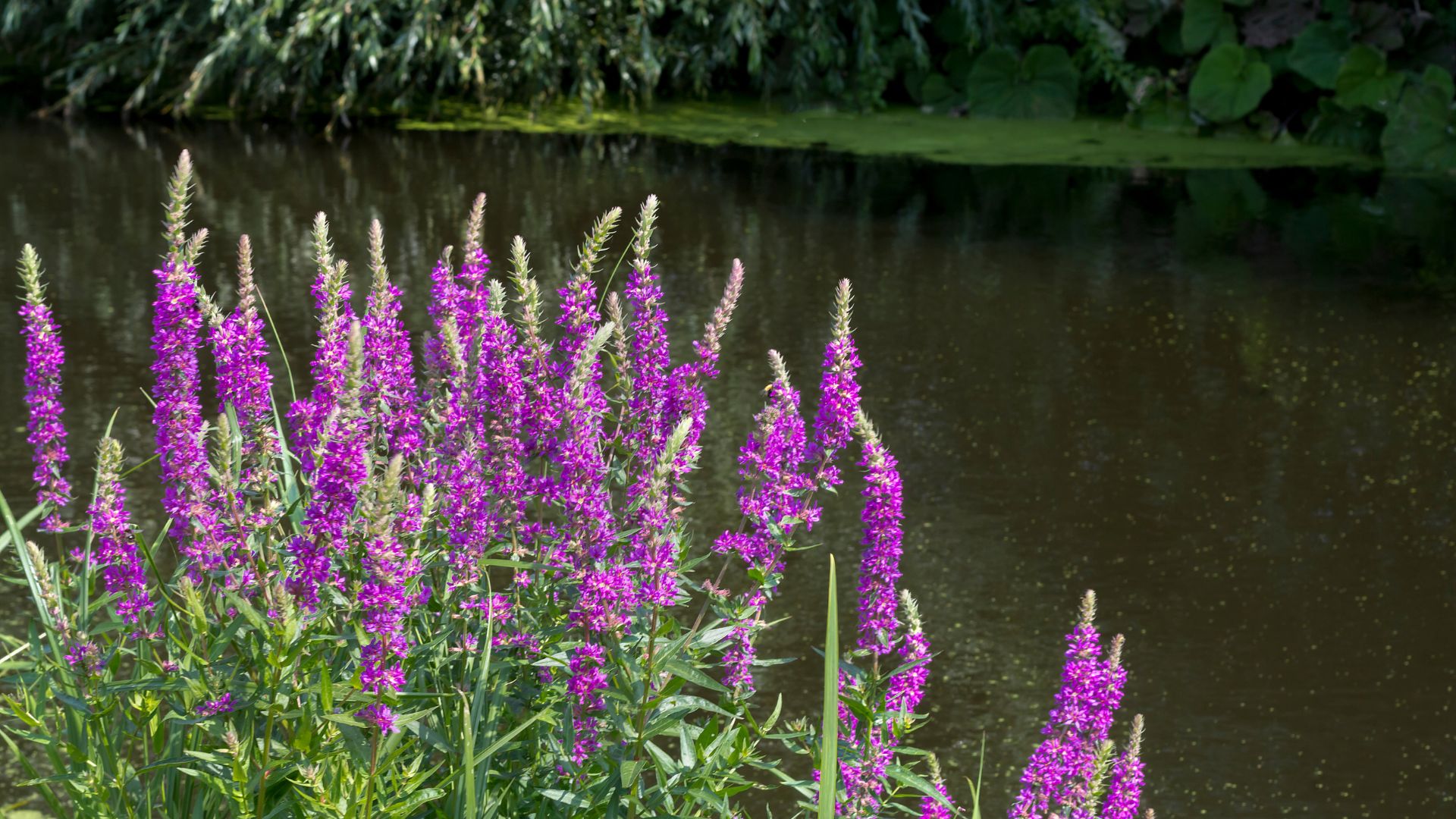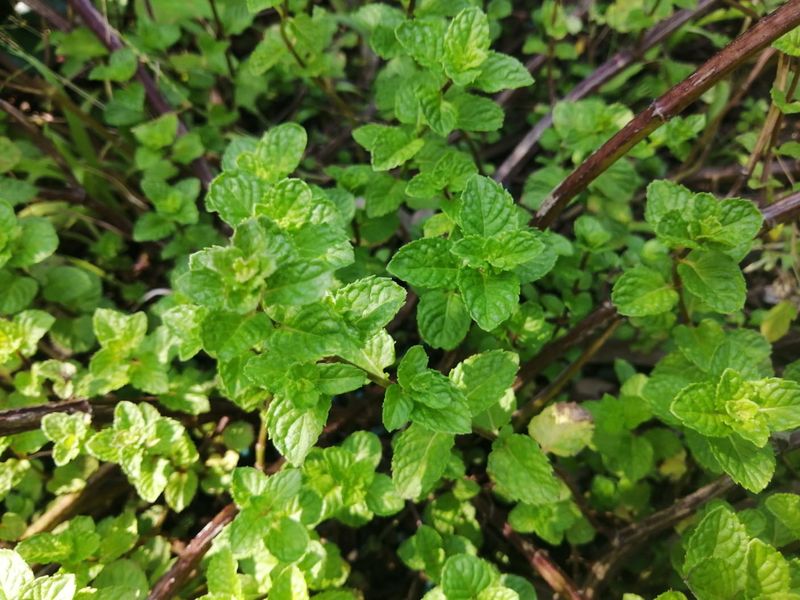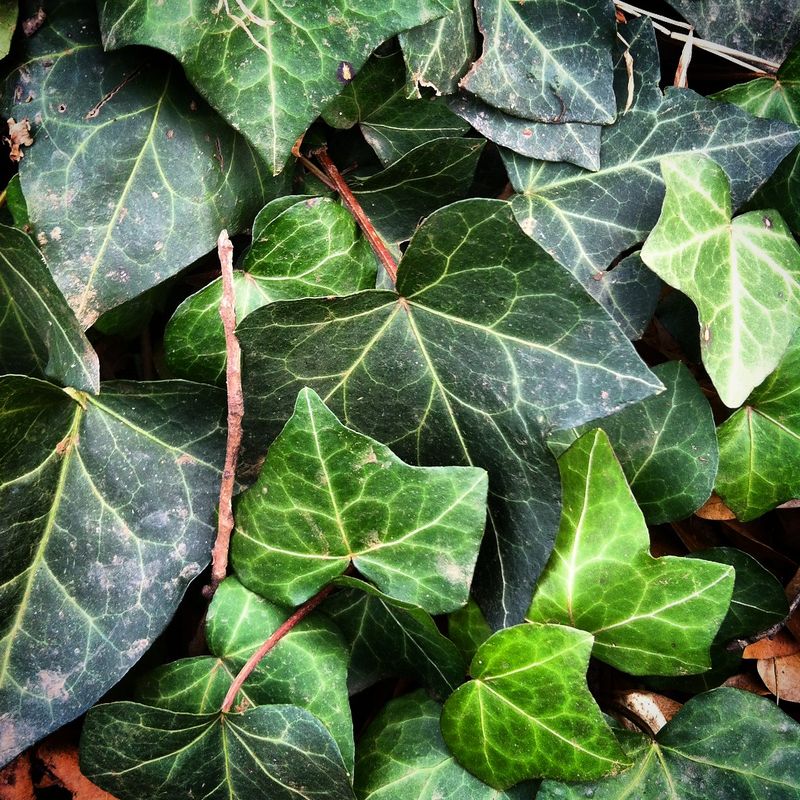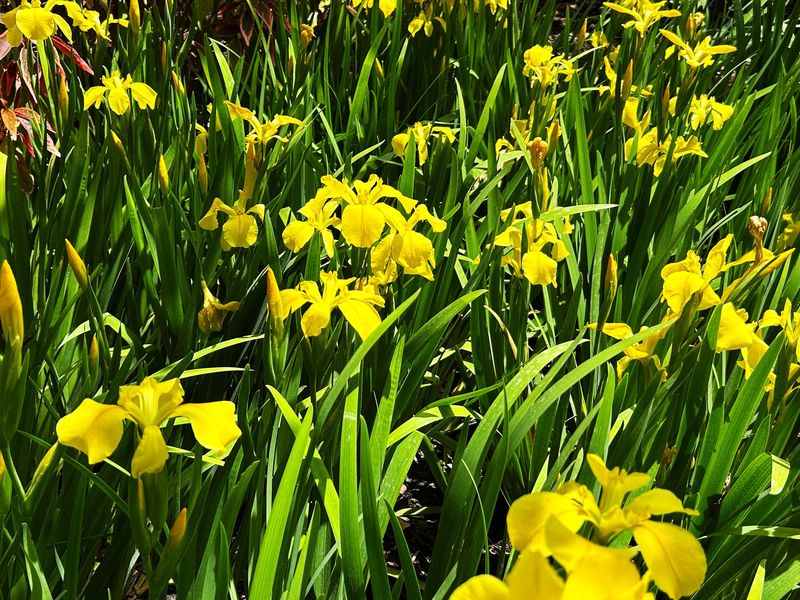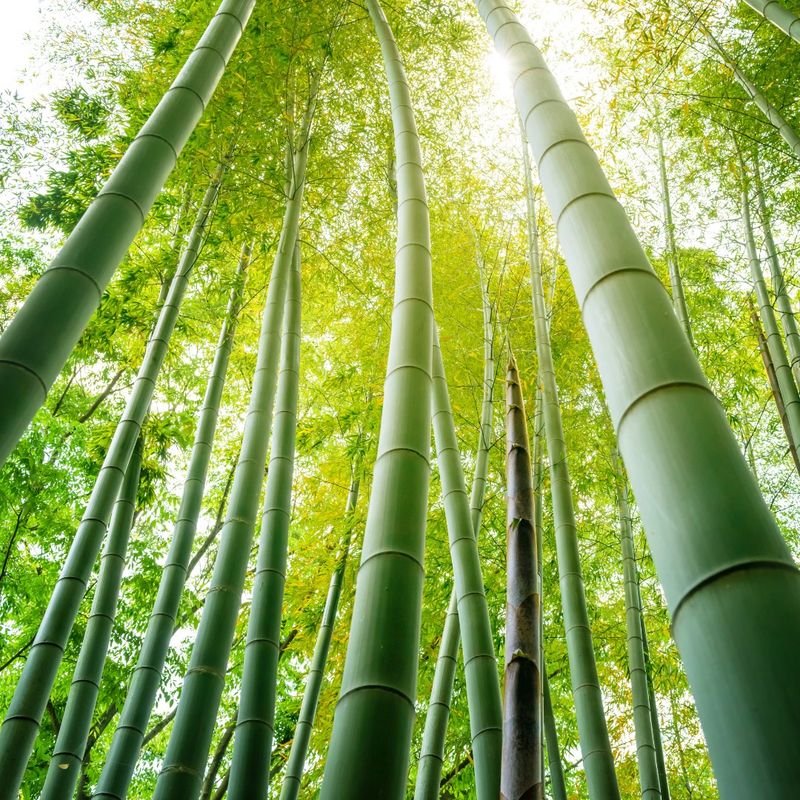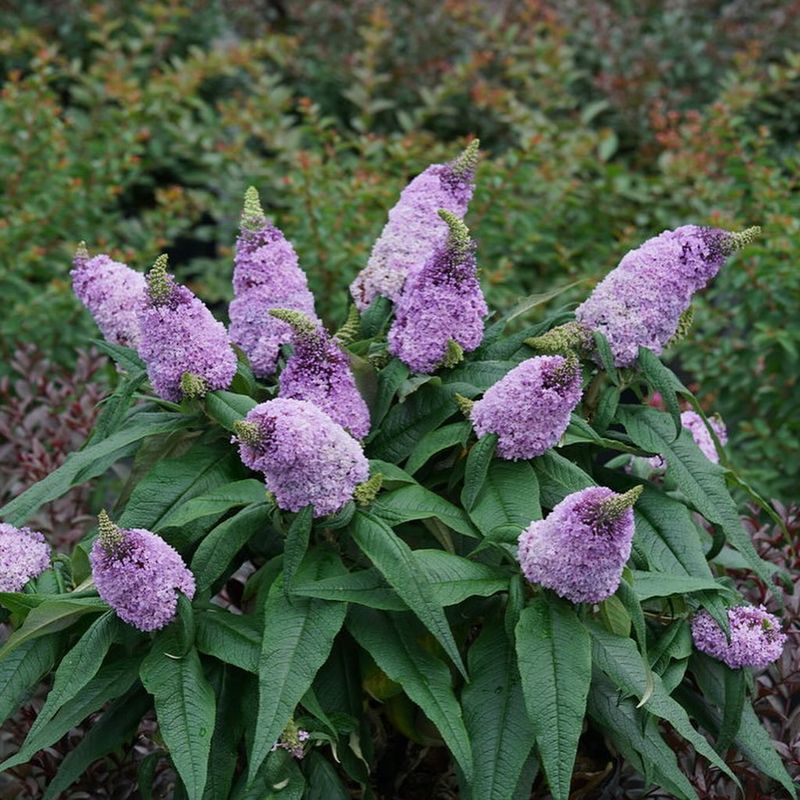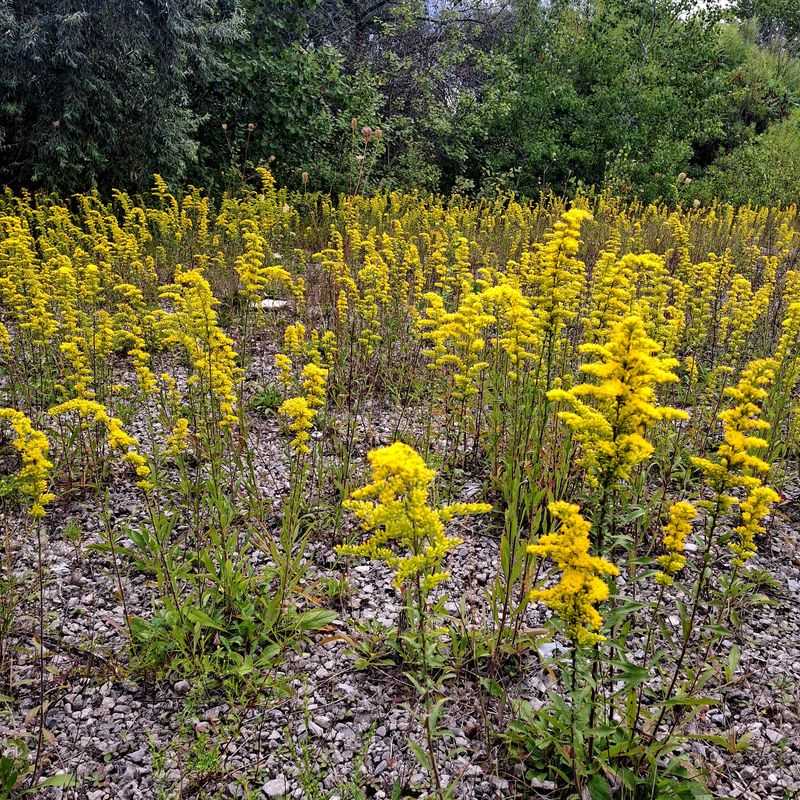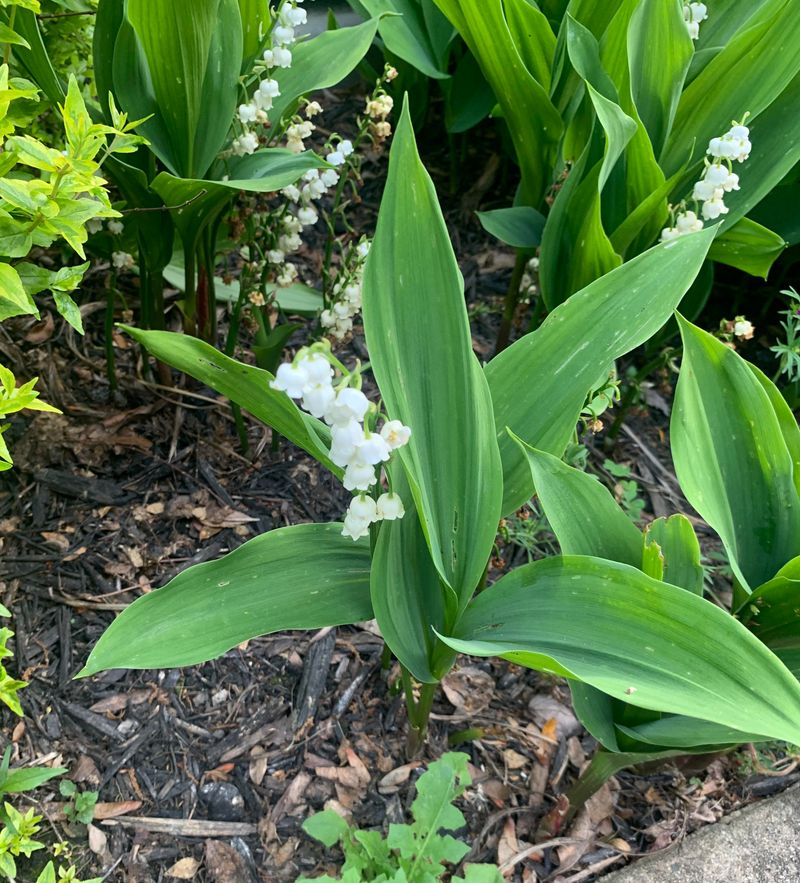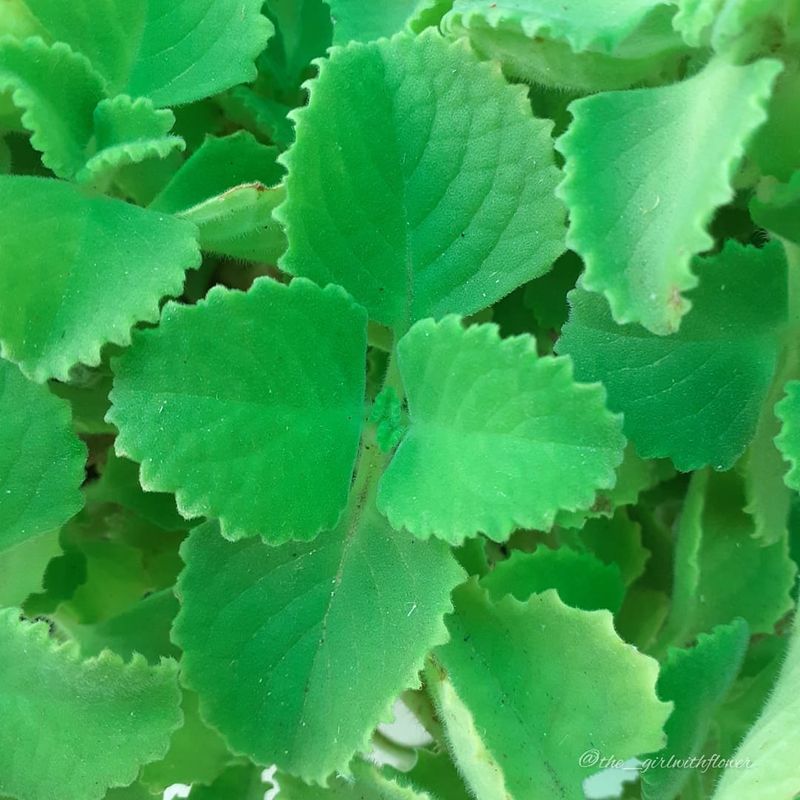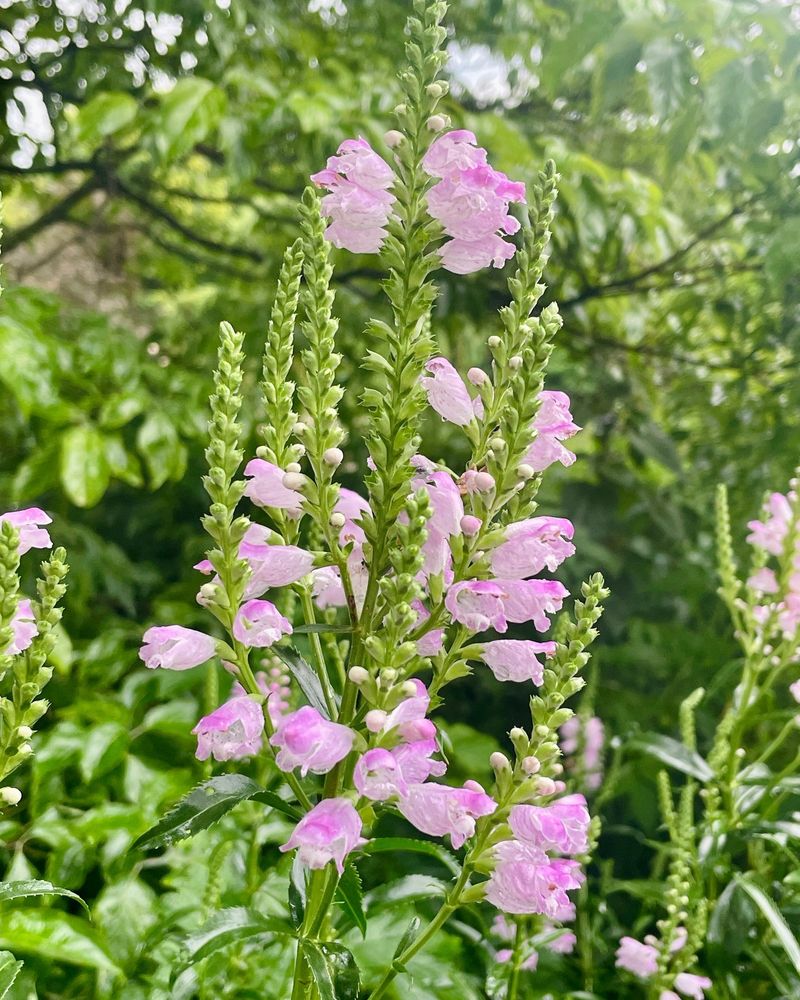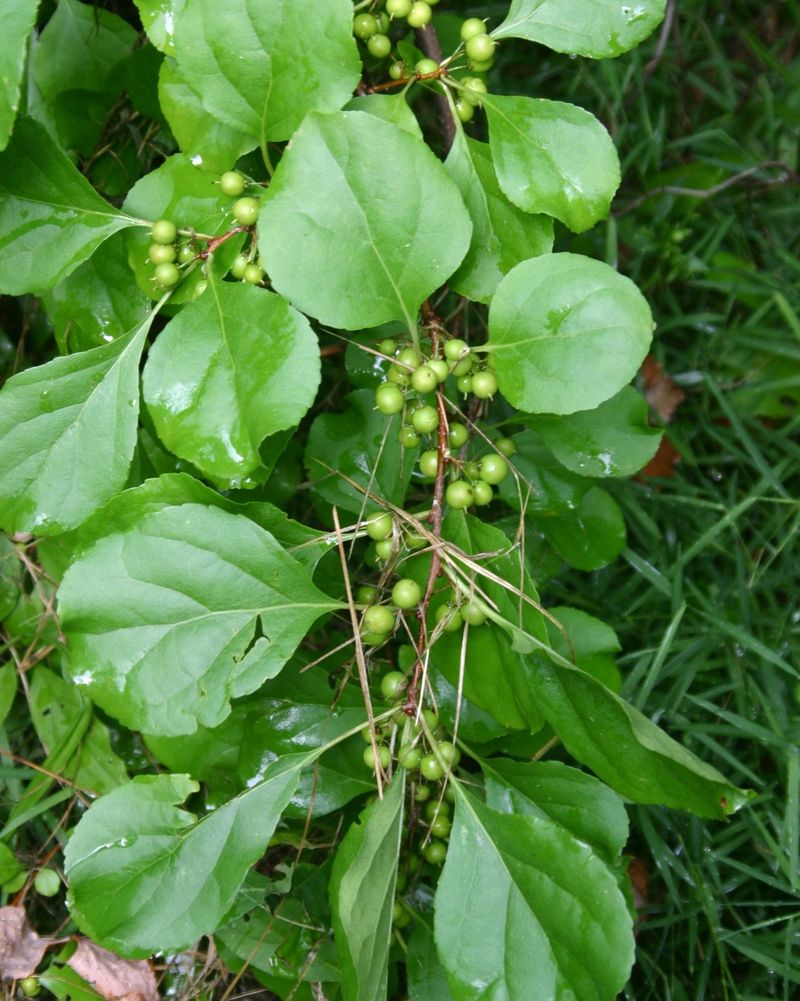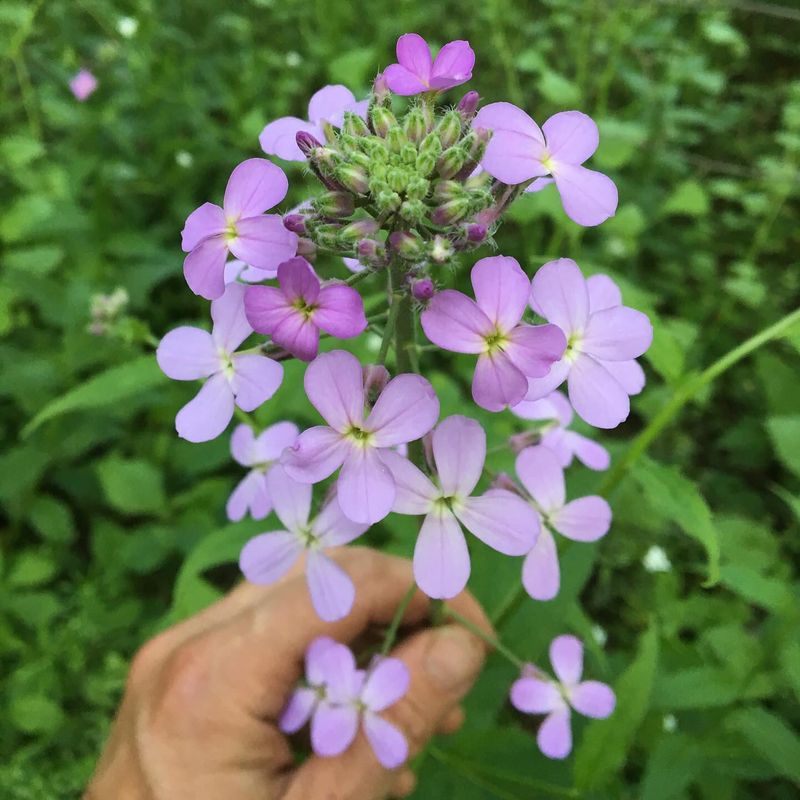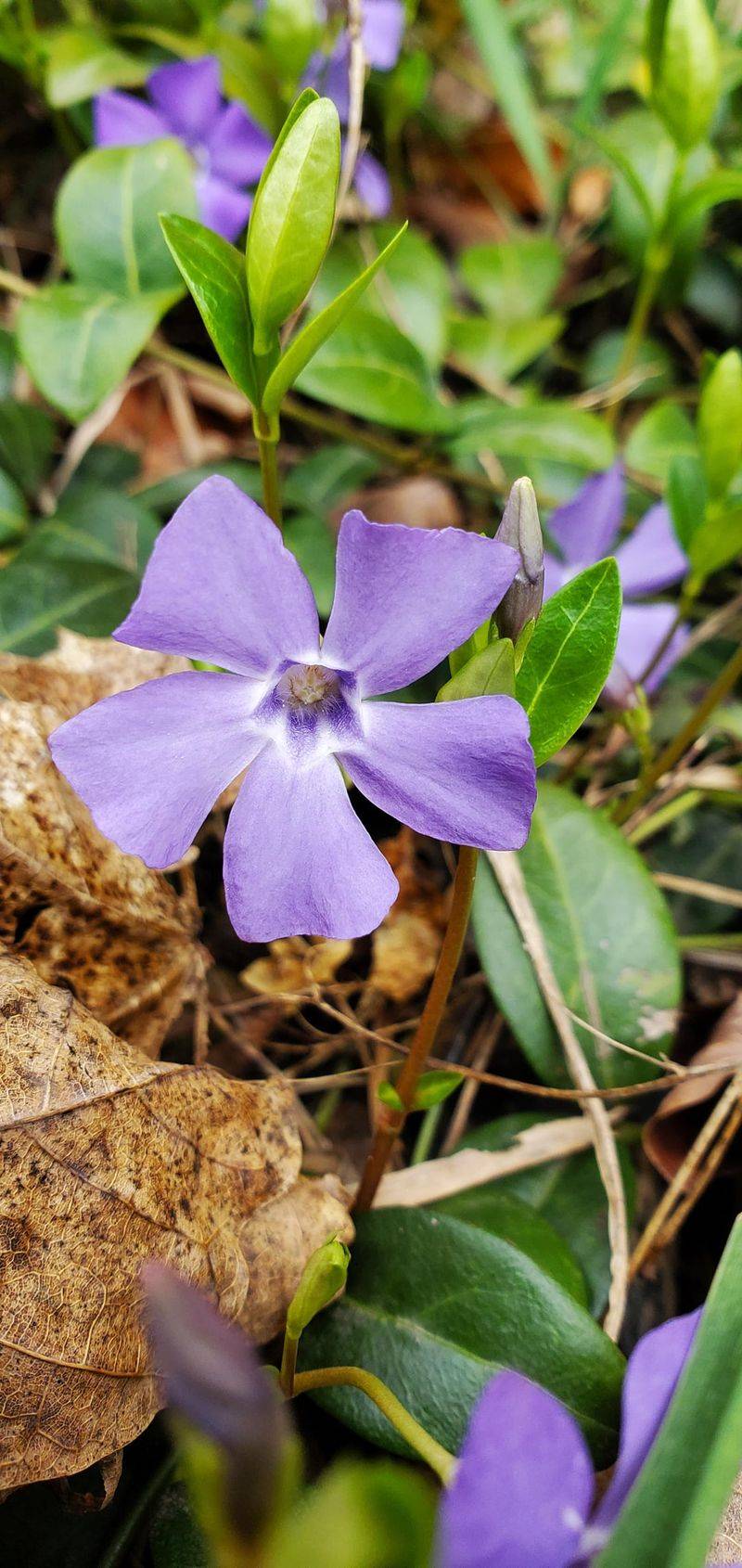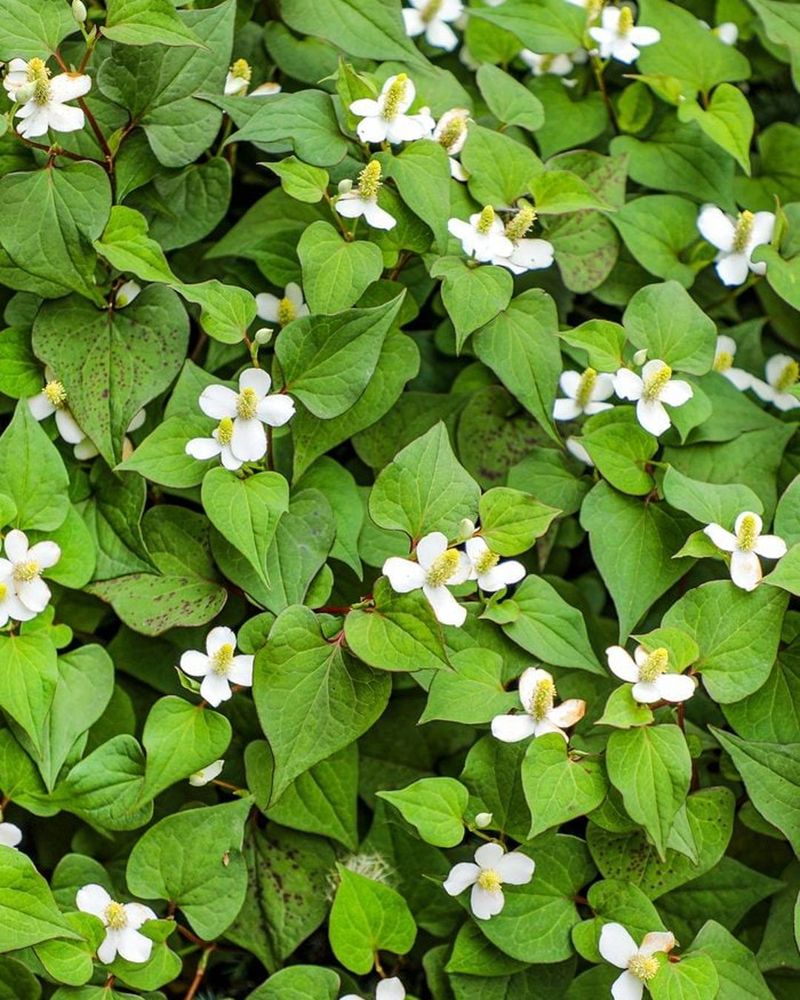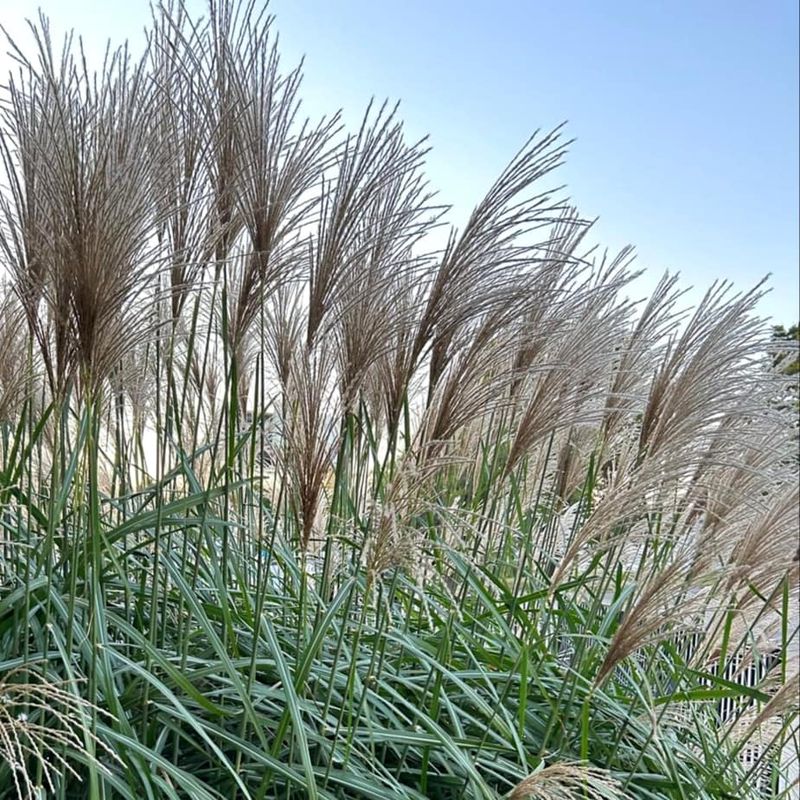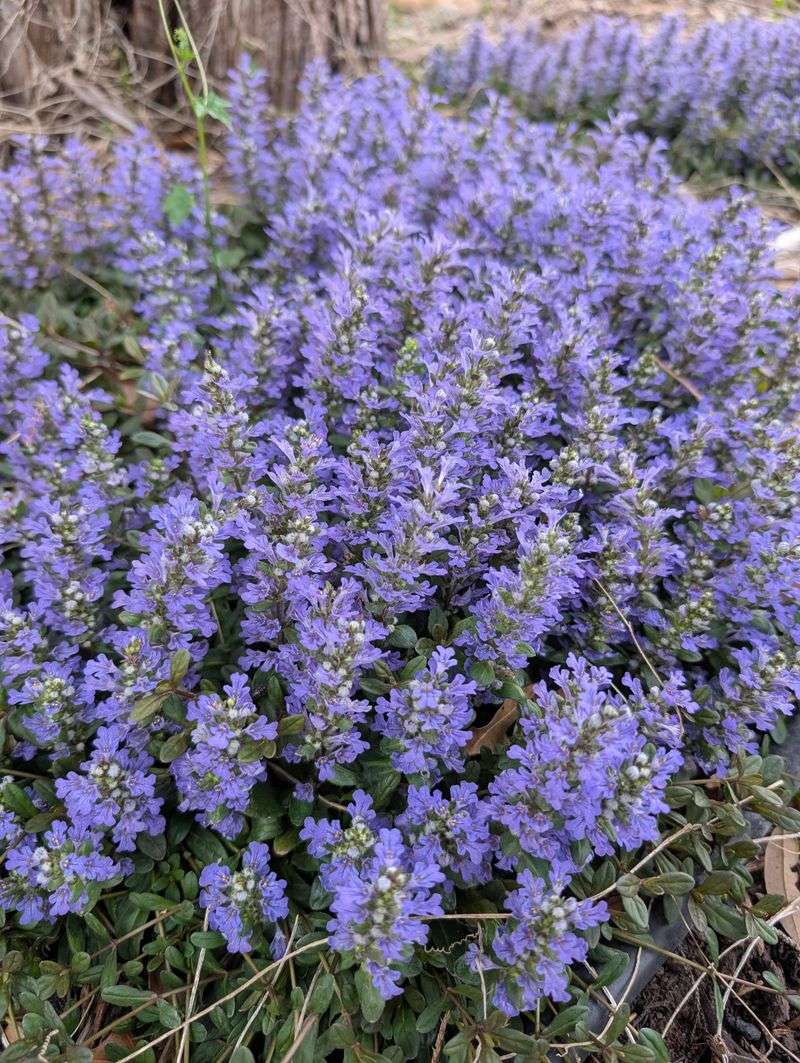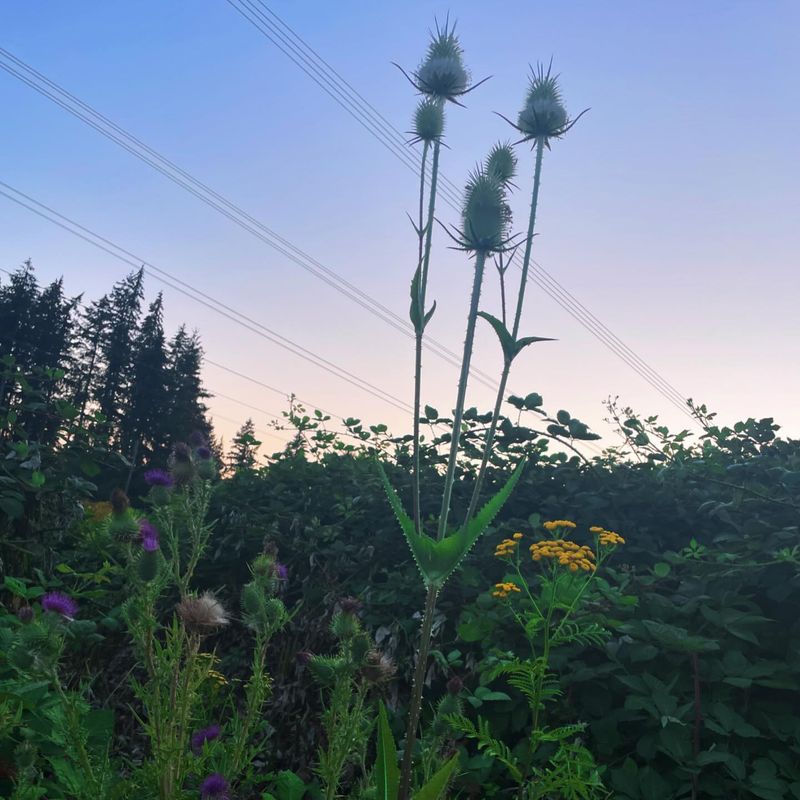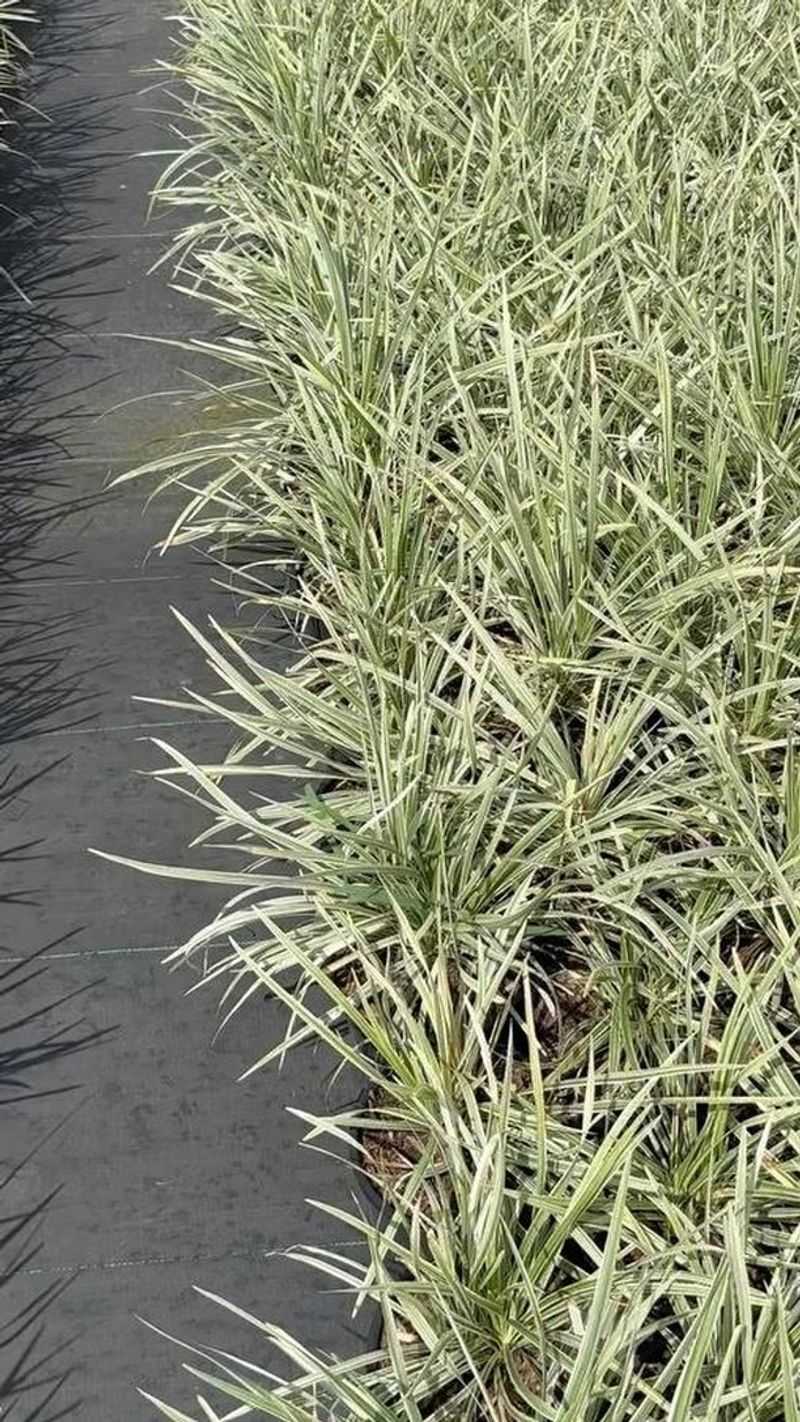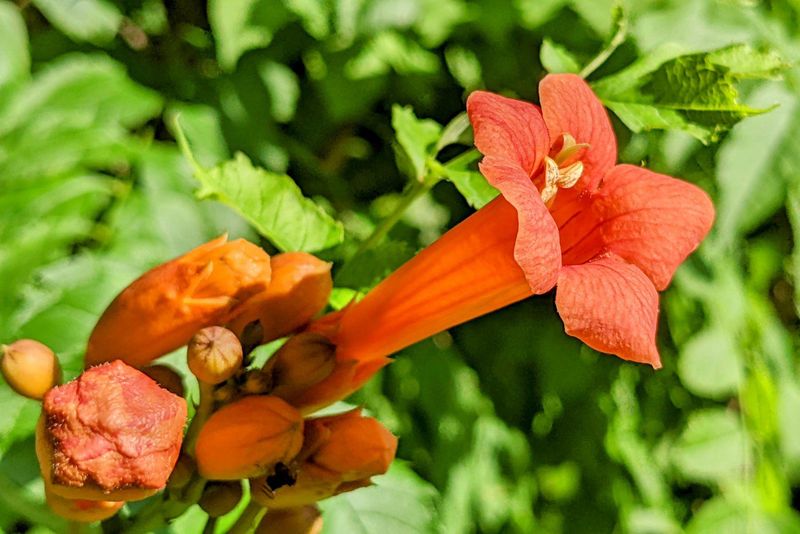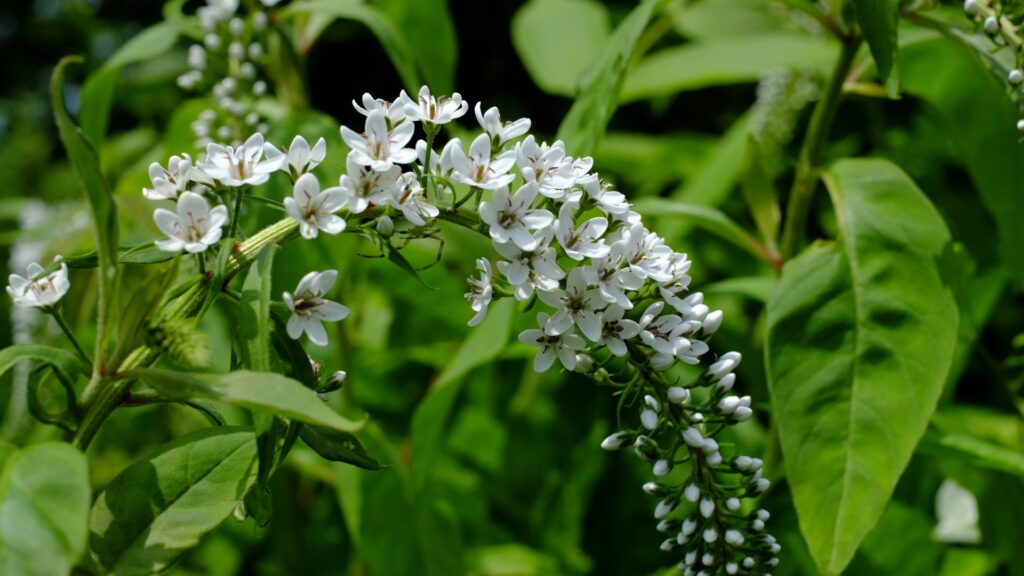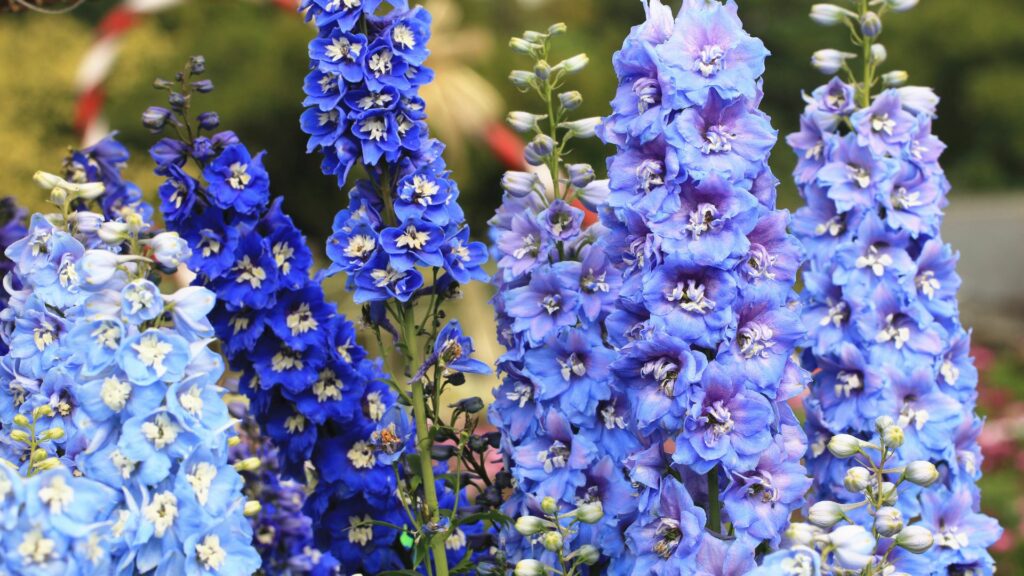The excitement of planting new perennials can be hard to resist, but trust me, timing is everything. I’ve learned the hard way that some plants just aren’t meant to be in the ground right now, whether it’s the wrong season or they’re just too finicky for the conditions.
These seemingly harmless beauties can turn into garden headaches if you don’t give them the right environment. Before you grab that trowel, here are 22 perennials you’ll want to avoid planting at this very moment.
1. Invasive Purple Loosestrife
Once welcomed for its stunning purple flower spikes, gardeners now regret introducing Purple Loosestrife into their landscapes. A single plant produces over two million seeds annually, quickly transforming diverse wetland ecosystems into monocultures.
Native wildlife suffers as this aggressive invader outcompetes important food sources and habitat plants. In many states, it’s now illegal to plant or sell Purple Loosestrife due to its devastating environmental impact.
Even cultivars marketed as “sterile” can cross-pollinate with wild varieties, creating viable seeds. For purple blooms without the ecological damage, consider native alternatives like blazing star or gayfeather instead.
2. Aggressive Mint
Garden beginners often learn a hard lesson when planting mint directly in garden beds. Mint spreads through underground runners called stolons, traveling far beyond its original planting spot and popping up everywhere.
What starts as a convenient herb patch can quickly become a garden nightmare as mint invades neighboring plants and lawn areas. Even pulling it up rarely solves the problem since tiny root fragments left behind quickly regenerate.
Controlling mint requires constant vigilance and often becomes a never-ending battle. If you crave fresh mojitos or mint tea, grow this aromatic herb in containers with saucers underneath to catch any escaping roots.
3. Troublesome Japanese Barberry
Landscape designers once favored Japanese Barberry for its attractive burgundy foliage and low maintenance needs. However, birds spread its berries far and wide, creating thorny thickets that crowd out native vegetation in natural areas.
Research has revealed an even more troubling problem with barberry. Its dense growth creates ideal humidity levels for ticks that carry Lyme disease, potentially increasing disease risk in your neighborhood.
Many states now classify Japanese Barberry as invasive and restrict its sale. For similar landscape benefits without the problems, consider native alternatives like chokeberry or ninebark, which offer beautiful foliage and berries without the ecological baggage.
4. Rampant English Ivy
Romantic visions of ivy-covered cottages lead many gardeners to plant English Ivy without understanding its aggressive nature. Once established, it climbs and covers everything in its path—trees, walls, and ground—forming dense mats that smother native plants.
English Ivy damages buildings by working into mortar and creating moisture problems. On trees, it adds significant weight and reduces light, potentially leading to decline and increased risk during storms.
When you attempt removal, be prepared for a challenge. Its waxy leaves resist herbicides, and manual removal requires persistence to eliminate every bit of the clingy stems. Native alternatives like Virginia creeper offer similar coverage with fall color and bird-friendly berries.
5. Problematic Yellow Flag Iris
Striking yellow blooms make Yellow Flag Iris tempting for water gardens and pond edges. Few realize this beautiful perennial ranks among North America’s most destructive wetland invaders, forming dense colonies that displace native species.
Yellow Flag Iris spreads both by seeds that float downstream and by thick rhizomes that form impenetrable mats. These dense root systems alter hydrology and reduce habitat quality for fish, amphibians, and invertebrates.
All parts of the plant contain toxic compounds that can irritate skin and poison wildlife. For water garden beauty without ecological harm, consider native alternatives like blue flag iris, which provides similar aesthetics while supporting local ecosystems.
6. Persistent Bamboo
Garden catalogs make bamboo look exotic and appealing, promising quick privacy screens and tropical ambiance. Running bamboo varieties send underground rhizomes far from the original planting, emerging through lawns, patios, and even house foundations.
Neighbors rarely appreciate bamboo’s wandering ways when it crosses property lines. Some municipalities now regulate bamboo planting due to widespread neighborhood disputes and property damage.
Containing bamboo requires serious infrastructure—typically concrete barriers extending at least 30 inches deep. Even clumping varieties eventually expand beyond their original footprint. For screening without the headaches, consider native shrubs like serviceberry or viburnum that stay where you plant them.
7. Deceptive Butterfly Bush
Garden centers market Butterfly Bush as wildlife-friendly, showing packaging with beautiful butterflies flocking to its fragrant purple blooms. While adult butterflies do visit for nectar, the plant offers nothing for their caterpillars, making it ecological eye candy without substance.
Butterfly Bush produces thousands of seeds that spread into natural areas, displacing native plants that provide complete butterfly habitat. Many states now classify it as invasive due to its ability to colonize disturbed areas.
Creating an authentic butterfly garden requires native plants that support the entire lifecycle. Replace Butterfly Bush with buttonbush, Joe-Pye weed, or native milkweed—plants that attract adult butterflies while also feeding their hungry caterpillars.
8. Allergy-Inducing Goldenrod
Fall brings golden waves of Goldenrod to meadows and gardens, often blamed for seasonal allergies. Contrary to popular belief, Goldenrod pollen isn’t the true culprit—it’s heavy and insect-pollinated, unlike wind-pollinated ragweed that blooms simultaneously.
Goldenrod’s real garden problem lies in its aggressive spreading habit. Some species send out underground runners that quickly colonize beyond their intended space, overwhelming less vigorous plants.
Garden-friendly cultivars like ‘Fireworks’ or ‘Golden Fleece’ behave better than wild types but still require monitoring. Before planting any Goldenrod, research the specific variety’s growth habits and provide adequate space or barriers to keep it contained within its designated area.
9. Toxic Lily of the Valley
Delicate white bells and sweet fragrance make Lily of the Valley a nostalgic favorite in shade gardens. Few gardeners realize every part of this plant contains potent cardiac glycosides that can cause severe poisoning or even death if ingested.
Lily of the Valley poses serious risks in households with young children or pets who might be attracted to its bright red berries. Once established, it spreads relentlessly through underground rhizomes, forming dense colonies that exclude other plants.
Removing an established patch requires persistence and thoroughness. For safer alternatives with similar woodland charm, consider native foam flower, wild ginger, or Canada mayflower, which offer delicate white blooms without the toxicity or aggressive spreading.
10. Stubborn Bishop’s Weed
Variegated forms of Bishop’s Weed (also called Goutweed or Snow-on-the-Mountain) tempt gardeners with promises of brightening shady spots where little else grows. Initially, its white-edged leaves create an attractive groundcover that seems well-behaved.
The honeymoon ends quickly as Bishop’s Weed reveals its true invasive nature. Its aggressive underground rhizomes infiltrate perennial beds, lawns, and even neighboring properties, creating a maintenance nightmare.
Control efforts often fail as tiny root fragments regenerate into new plants. Even chemical approaches rarely provide complete eradication. For variegated ground covers without the invasive tendencies, consider Japanese forest grass, coral bells, or lamium varieties with better manners.
11. Unruly Obedient Plant
Garden naming sometimes involves irony, as demonstrated by Obedient Plant (Physostegia virginiana). Despite its name suggesting good behavior, nothing could be further from the truth in most garden settings.
Obedient Plant earned its name because individual florets stay in position when moved, but the plant itself refuses to stay put. Underground runners spread vigorously, creating new plants several feet from the original.
What begins as a charming addition with pink snapdragon-like flowers can quickly become a garden bully. If you’re determined to grow it, plant in containers or install deep barriers. For similar vertical interest without the spreading habit, consider foxglove, turtlehead, or blazing star.
12. Overzealous Oriental Bittersweet
Fall wreaths and holiday decorations featuring bright orange-red berries often incorporate Oriental Bittersweet without understanding its devastating ecological impact. Garden centers sometimes still sell this aggressive vine despite its status as a prohibited invasive species in many states.
Oriental Bittersweet grows rapidly, climbing 60 feet or more into forest canopies. Its heavy vines strangle trees and pull down branches, causing structural damage during storms.
Birds spread the seeds widely, establishing new infestations in natural areas. Removing established vines requires cutting stems and applying herbicide to prevent resprouting. For fall berries without ecological harm, plant native American bittersweet instead—similar appearance but better ecological behavior.
13. Deceiving Dame’s Rocket
Spring wildflower mixes often contain Dame’s Rocket, whose fragrant purple or white blooms resemble garden phlox. Many gardeners don’t realize they’re planting a short-lived but aggressively self-seeding perennial that’s banned in some states.
Dame’s Rocket produces thousands of seeds that germinate readily, quickly colonizing natural areas and displacing native spring ephemeral wildflowers. Its spread through forest edges and meadows reduces plant diversity and disrupts ecosystem functions.
Seeds remain viable in soil for many years, making control a long-term commitment. For similar garden appeal without ecological costs, plant native woodland phlox, wild blue phlox, or Virginia bluebells, which provide spring color while supporting local ecosystems.
14. Creeping Periwinkle
Slope stabilization and ground cover needs lead many gardeners to plant Periwinkle (Vinca minor), attracted by its glossy evergreen leaves and pretty blue flowers. Marketing rarely mentions how this seemingly innocent plant escapes garden boundaries to invade natural areas.
Periwinkle forms dense mats that prevent native seedlings from establishing and reduce habitat value for ground-nesting birds and beneficial insects. Its waxy leaves resist herbicides, making control especially challenging once established.
Removing periwinkle requires persistent effort to eliminate every stem fragment. For ground cover alternatives that stay put, consider wild ginger, foamflower, or barren strawberry—native options that provide coverage without the invasive tendencies.
15. Spreading Chameleon Plant
Striking heart-shaped leaves splashed with red, green, yellow, and silver make Chameleon Plant (Houttuynia cordata ‘Chameleon’) irresistible to gardeners seeking colorful ground covers. Nursery tags rarely warn about its extraordinarily aggressive spreading habit.
Chameleon Plant spreads through fragmented rhizomes, with even tiny root pieces generating new plants. Its pungent aroma when crushed explains why deer and rabbits avoid it—but also why gardeners come to regret planting it.
Complete eradication often requires multiple seasons of persistent effort. For colorful ground cover without the invasive tendencies, consider heuchera varieties, ajuga, or hardy geraniums that offer visual interest without taking over the entire garden.
16. Persistent Chinese Silvergrass
Graceful arching forms and feathery plumes make ornamental grasses like Chinese Silvergrass (Miscanthus sinensis) popular landscape features. Few gardeners realize these impressive specimens produce thousands of wind-dispersed seeds that establish readily in natural areas.
Chinese Silvergrass creates dense stands that alter habitat structure and increase fire risk due to its highly flammable nature. Its deep rhizomes make removal challenging once established in the landscape.
While newer cultivars claim sterility, many still produce viable seeds. For similar dramatic effect without ecological risk, choose native ornamental grasses like switchgrass, little bluestem, or prairie dropseed that provide habitat value while staying better behaved.
17. Aggressive Ajuga
Ground cover challenges in shady areas lead many gardeners to plant Ajuga (also called Bugleweed), attracted by its evergreen foliage and blue flower spikes. Initially, it seems like a perfect solution for difficult spots where grass won’t grow.
Ajuga’s aggressive nature becomes apparent as it sends out numerous stolons that root wherever they touch soil. In ideal conditions, it quickly spreads beyond its intended boundaries into lawns and garden beds.
Removing established patches requires diligence to prevent reinfestation. For shade ground covers with more restraint, consider wild ginger, foamflower, or creeping phlox that provide coverage without the aggressive spreading that makes Ajuga problematic.
18. Tenacious Tansy
Cottage garden enthusiasts often plant Tansy for its fernlike foliage and bright yellow button flowers, unaware of its problematic nature. Historical medicinal uses add to its appeal, but this European native quickly becomes a garden thug.
Tansy spreads aggressively through both rhizomes and self-seeding, quickly colonizing garden beds and natural areas. All parts contain toxic compounds that can cause liver damage if ingested, posing risks to children and pets.
Controlling established patches requires persistence, as root fragments readily regenerate. For similar yellow blooms without the problems, consider native alternatives like black-eyed Susan, coreopsis, or goldenrod cultivars that provide more ecological value.
19. Relentless Ribbon Grass
Variegated white-and-green stripes make Ribbon Grass (Phalaris arundinacea ‘Picta’) appealing for brightening shady spots or stabilizing moist areas. Garden centers rarely mention its inclusion on invasive species lists in many regions.
Ribbon Grass spreads aggressively through underground rhizomes, quickly escaping garden boundaries into natural areas. In wetlands, it forms dense monocultures that eliminate native plant diversity and reduce wildlife habitat value.
Even when contained in gardens, it often reverts to its all-green invasive form. For variegated interest without the ecological damage, consider Japanese forest grass, sedges, or variegated Solomon’s seal that provide similar aesthetic appeal with better garden manners.
20. Overwhelming Trumpet Vine
Hummingbird enthusiasts often plant Trumpet Vine, enchanted by its tubular orange flowers that attract these beloved birds. The plant’s vigorous nature becomes apparent only after it’s firmly established in the garden.
Trumpet Vine spreads through both underground runners and prolific self-seeding. Its powerful growth can damage structures by working into cracks in masonry or wood. Root fragments left behind during removal efforts quickly regenerate into new plants.
Controlling established vines requires years of vigilance. For hummingbird appeal without the headaches, consider native alternatives like cardinal flower, bee balm, or native honeysuckle varieties that attract wildlife without the aggressive spreading.
21. Fast-Spreading Gooseneck Loosestrife
At first glance, Gooseneck Loosestrife (Lysimachia clethroides) appears charming with its gently curved white flower spikes and ability to fill in garden gaps. But once established, it quickly turns from ornamental to overwhelming.
This perennial spreads aggressively via underground rhizomes, colonizing entire beds and edging out less competitive plants. Even regular cutting or digging barely slows its expansion, as tiny root fragments regenerate easily.
Gardeners often underestimate its vigor until it dominates borders and invades lawns. For a similar arching look with better manners, try white-flowered varieties of veronica or obedient-but-not-obnoxious Culver’s root.
22. Short-Lived Delphinium In Summer Heat
Tall spikes of blue, purple, or white blooms make Delphiniums a cottage garden staple—but planting them now, especially in areas with rising summer heat, usually leads to disappointment.
Delphiniums prefer cool conditions and struggle when planted in late spring or early summer. High temperatures stress young plants, making them prone to disease and stunted growth. Even mature plants may fail to thrive or bolt quickly in hot weather.
If you’re determined to grow them, wait until fall for better root establishment. For heat-tolerant vertical color, consider liatris, salvias, or native blazing star instead—they handle summer stress much more gracefully.

